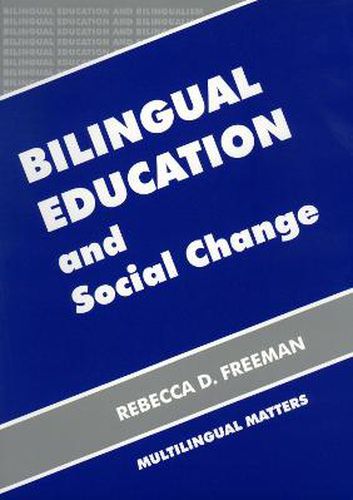Readings Newsletter
Become a Readings Member to make your shopping experience even easier.
Sign in or sign up for free!
You’re not far away from qualifying for FREE standard shipping within Australia
You’ve qualified for FREE standard shipping within Australia
The cart is loading…






Ideally, dual-language programs enable students from two language backgrounds to become bilingual, achieve academically through two languages, and develop improved intergroup understanding and relations. However, there is very little research that demonstrates how an actual dual-language program functions at the local level. This book provides a case study of dual-language planning and implementation at Oyster Bilingual School, a ‘successful’ Spanish-English public elementary school program in Washington, DC. The first three chapters provide important background for understanding how Oyster’s dual-language program interacts with the larger sociopolitical context of minority education in the United States. Chapters 4-10 provide a detailed analysis of how the alternative educational system at Oyster Bilingual School challenges mainstream US educational programs and practices that discriminate against minority students. The case study demonstrates how Oyster’s dual-language policy, multicultural curriculum content, student-centered organization of classroom interaction, and performance-based assessment practices together function to provide more opportunities to language minority and language majority students than are traditionally available in mainstream US schools. Rather than expecting language minority students to become monolingual in standard English and to assimilate to white middle-class norms, Oyster’s educational program encourages all students to become bilingual in Spanish and English and to expect, tolerate, and respect linguistic and cultural diversity at school and in society. This socializing discourse enables language minority and language majority students to participate and achieve more or less equally at school. The book concludes with a discussion of implications for research and practice in other school and community contexts.
$9.00 standard shipping within Australia
FREE standard shipping within Australia for orders over $100.00
Express & International shipping calculated at checkout
Ideally, dual-language programs enable students from two language backgrounds to become bilingual, achieve academically through two languages, and develop improved intergroup understanding and relations. However, there is very little research that demonstrates how an actual dual-language program functions at the local level. This book provides a case study of dual-language planning and implementation at Oyster Bilingual School, a ‘successful’ Spanish-English public elementary school program in Washington, DC. The first three chapters provide important background for understanding how Oyster’s dual-language program interacts with the larger sociopolitical context of minority education in the United States. Chapters 4-10 provide a detailed analysis of how the alternative educational system at Oyster Bilingual School challenges mainstream US educational programs and practices that discriminate against minority students. The case study demonstrates how Oyster’s dual-language policy, multicultural curriculum content, student-centered organization of classroom interaction, and performance-based assessment practices together function to provide more opportunities to language minority and language majority students than are traditionally available in mainstream US schools. Rather than expecting language minority students to become monolingual in standard English and to assimilate to white middle-class norms, Oyster’s educational program encourages all students to become bilingual in Spanish and English and to expect, tolerate, and respect linguistic and cultural diversity at school and in society. This socializing discourse enables language minority and language majority students to participate and achieve more or less equally at school. The book concludes with a discussion of implications for research and practice in other school and community contexts.